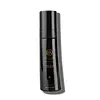What's inside
What's inside
 Key Ingredients
Key Ingredients

 Benefits
Benefits

 Concerns
Concerns

No concerns
 Ingredients Side-by-side
Ingredients Side-by-side

Water
Skin ConditioningCaprylic/Capric Triglyceride
MaskingPropanediol
SolventCarthamus Tinctorius Oleosomes
EmollientCetearyl Olivate
Sorbitan Olivate
EmulsifyingCetraria Islandica Thallus Extract
HumectantPolypodium Vulgare Rhizome Extract
HumectantSphagnum Magellanicum Extract
Skin ConditioningHydrolyzed Jojoba Esters
Skin ConditioningMicrocrystalline Cellulose
AbsorbentCellulose Gum
Emulsion StabilisingXanthan Gum
EmulsifyingGluconolactone
Skin ConditioningCaprylhydroxamic Acid
1,2-Hexanediol
Skin ConditioningCitric Acid
BufferingSodium Benzoate
MaskingWater, Caprylic/Capric Triglyceride, Propanediol, Carthamus Tinctorius Oleosomes, Cetearyl Olivate, Sorbitan Olivate, Cetraria Islandica Thallus Extract, Polypodium Vulgare Rhizome Extract, Sphagnum Magellanicum Extract, Hydrolyzed Jojoba Esters, Microcrystalline Cellulose, Cellulose Gum, Xanthan Gum, Gluconolactone, Caprylhydroxamic Acid, 1,2-Hexanediol, Citric Acid, Sodium Benzoate
Water
Skin ConditioningGlycerin
HumectantSqualane
EmollientHelianthus Annuus Seed Oil
EmollientMethylsilanol Hydroxyproline Aspartate
Skin ConditioningSodium Acrylates Copolymer
C12-15 Alkyl Benzoate
AntimicrobialNigella Sativa Seed Oil
EmollientIsomalt
HumectantAcacia Senegal Gum
MaskingSodium Stearoyl Glutamate
CleansingCanola Oil
EmollientHelianthus Annuus Seed Wax
Skin ConditioningPanthenol
Skin ConditioningPentaerythrityl Tetraisostearate
EmollientCandelilla/Jojoba/Rice Bran Polyglyceryl-3 Esters
EmulsifyingEthyl Macadamiate
Skin ConditioningCaprylic/Capric Triglyceride
MaskingNiacinamide
SmoothingCeramide NP
Skin ConditioningAllantoin
Skin ConditioningBisabolol
MaskingHyaluronic Acid
HumectantLecithin
EmollientHydrolyzed Oat Protein
Skin ConditioningAloe Barbadensis Leaf Juice Powder
Skin ConditioningC10-30 Cholesterol/Lanosterol Esters
EmulsifyingAdenosine Triphosphate
Skin ConditioningCamellia Sinensis Leaf Extract
AntimicrobialTocopherol
AntioxidantHydroxyphenyl Propamidobenzoic Acid
Skin ConditioningOpuntia Ficus-Indica Stem Extract
Skin ConditioningCrocus Chrysanthus Bulb Extract
Skin ConditioningPhytol
EmollientPalmitoyl Tripeptide-8
Skin ConditioningXanthan Gum
EmulsifyingSilica
AbrasiveDextran
Zea Mays Starch
AbsorbentSodium Gluconate
Skin ConditioningCetearyl Alcohol
EmollientEthylhexylglycerin
Skin ConditioningCitric Acid
BufferingGlyceryl Stearate
EmollientPentylene Glycol
Skin ConditioningSodium Stearoyl Lactylate
EmulsifyingSodium Hydroxide
BufferingO-Cymen-5-Ol
AntimicrobialPotassium Sorbate
PreservativeSalicylic Acid
MaskingMalic Acid
BufferingButylene Glycol
HumectantPhenoxyethanol
PreservativeWater, Glycerin, Squalane, Helianthus Annuus Seed Oil, Methylsilanol Hydroxyproline Aspartate, Sodium Acrylates Copolymer, C12-15 Alkyl Benzoate, Nigella Sativa Seed Oil, Isomalt, Acacia Senegal Gum, Sodium Stearoyl Glutamate, Canola Oil, Helianthus Annuus Seed Wax, Panthenol, Pentaerythrityl Tetraisostearate, Candelilla/Jojoba/Rice Bran Polyglyceryl-3 Esters, Ethyl Macadamiate, Caprylic/Capric Triglyceride, Niacinamide, Ceramide NP, Allantoin, Bisabolol, Hyaluronic Acid, Lecithin, Hydrolyzed Oat Protein, Aloe Barbadensis Leaf Juice Powder, C10-30 Cholesterol/Lanosterol Esters, Adenosine Triphosphate, Camellia Sinensis Leaf Extract, Tocopherol, Hydroxyphenyl Propamidobenzoic Acid, Opuntia Ficus-Indica Stem Extract, Crocus Chrysanthus Bulb Extract, Phytol, Palmitoyl Tripeptide-8, Xanthan Gum, Silica, Dextran, Zea Mays Starch, Sodium Gluconate, Cetearyl Alcohol, Ethylhexylglycerin, Citric Acid, Glyceryl Stearate, Pentylene Glycol, Sodium Stearoyl Lactylate, Sodium Hydroxide, O-Cymen-5-Ol, Potassium Sorbate, Salicylic Acid, Malic Acid, Butylene Glycol, Phenoxyethanol
Ingredients Explained
These ingredients are found in both products.
Ingredients higher up in an ingredient list are typically present in a larger amount.
This ingredient is an emollient, solvent, and texture enhancer. It is considered a skin-softener by helping the skin prevent moisture loss.
It helps thicken a product's formula and makes it easier to spread by dissolving clumping compounds.
Caprylic Triglyceride is made by combining glycerin with coconut oil, forming a clear liquid.
While there is an assumption Caprylic Triglyceride can clog pores due to it being derived from coconut oil, there is no research supporting this.
Learn more about Caprylic/Capric TriglycerideCitric Acid is an alpha hydroxy acid (AHA) naturally found in citrus fruits like oranges, lemons, and limes.
Like other AHAs, citric acid can exfoliate skin by breaking down the bonds that hold dead skin cells together. This helps reveal smoother and brighter skin underneath.
However, this exfoliating effect only happens at high concentrations (20%) which can be hard to find in cosmetic products.
Due to this, citric acid is usually included in small amounts as a pH adjuster. This helps keep products slightly more acidic and compatible with skin's natural pH.
In skincare formulas, citric acid can:
While it can provide some skin benefits, research shows lactic acid and glycolic acid are generally more effective and less irritating exfoliants.
Most citric acid used in skincare today is made by fermenting sugars (usually from molasses). This synthetic version is identical to the natural citrus form but easier to stabilize and use in formulations.
Read more about some other popular AHA's here:
Learn more about Citric AcidWater. It's the most common cosmetic ingredient of all. You'll usually see it at the top of ingredient lists, meaning that it makes up the largest part of the product.
So why is it so popular? Water most often acts as a solvent - this means that it helps dissolve other ingredients into the formulation.
You'll also recognize water as that liquid we all need to stay alive. If you see this, drink a glass of water. Stay hydrated!
Learn more about WaterXanthan gum is used as a stabilizer and thickener within cosmetic products. It helps give products a sticky, thick feeling - preventing them from being too runny.
On the technical side of things, xanthan gum is a polysaccharide - a combination consisting of multiple sugar molecules bonded together.
Xanthan gum is a pretty common and great ingredient. It is a natural, non-toxic, non-irritating ingredient that is also commonly used in food products.
Learn more about Xanthan Gum